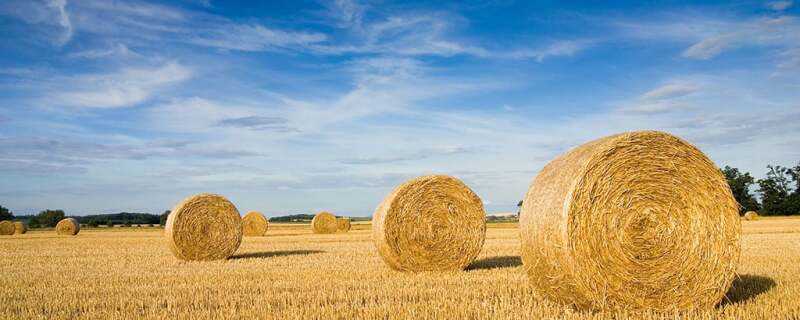To reduce the fire risk, bale and store hay only when its moisture content is less than 20 percent. Hay fires generally occur within six weeks of bailing, so it is crucial to monitor the temperature during this period. Drill ¼-inch-wide holes deep into the hay and lower a thermometer tied to a string into each hole. Leave the thermometer in place for 10 minutes in several areas to make sure you have an accurate reading.
Why does hay catch on fire?
Yes, although it might seem strange, wet hay is more flammable than dry hay. Wet haystacks and bales can create a chemical reaction and cause heat to build and start a fire. When hay builds an internal temperature of 130 degrees Fahrenheit, a chemical reaction starts and creates a flammable gas that can ignite.
How do you keep hay from catching fire?
The best way to keep hay from catching on fire is to keep the moisture below 20%, there are different things you can do to achieve this.
- Baling under good weather conditions. The best weather condition to bale hay is in the afternoon when it’s slightly windy and the humidity is under 50%.
- Using equipment that specializes in hay baling. Using farm equipment that specializes in hay baling can help decrease the moisture rates in the hay. The machines do this by helping dry the hay.
How do you test moisture in hay?
Testing hay before baling it
The easiest and most accurate way to test how much moisture is in the hay is to use an electric moisture tester. Test it by filling a bucket full of hay so it’s compact and then use the electric moisture tester to check the moisture levels.
Testing baled hay
Choose a random bale and insert the moisture tester. Sometimes you do have to take multiple readings when testing from a bale to get the most accurate reading.
Monitor hay at these key temperatures:
- 150 degrees — Monitor temperature daily.
- 160 degrees — Monitor temperature every four hours and inspect the stack. Never walk on top of hay that is heating.
Call the fire department and wet the hay at these temperatures:
- 175 degrees — Move hay away from anything flammable.
- 185 degrees — Flames likely will develop when the hay comes into contact with the air.
- 212 degrees — Hay is virtually certain to ignite.
Hay preservatives can produce deadly gas
Once it reaches 240 degrees, hay treated with preservatives containing ethoxyquin or butylated hydroxytoluene emits deadly hydrogen cyanide gas. Take appropriate safety measures and alert emergency responders if treated hay is heating or burning.
Hay treated with propionic acid does not produce hydrogen cyanide gas during a fire.
Get the most from your hay crop
Density, air temperature, humidity, and the amount of rainwater the hay absorbed after it was cut all play into how much time it takes a crop to dry. By managing these factors, you’ll protect against hay fires, improving the safety of your crop and your farm.






